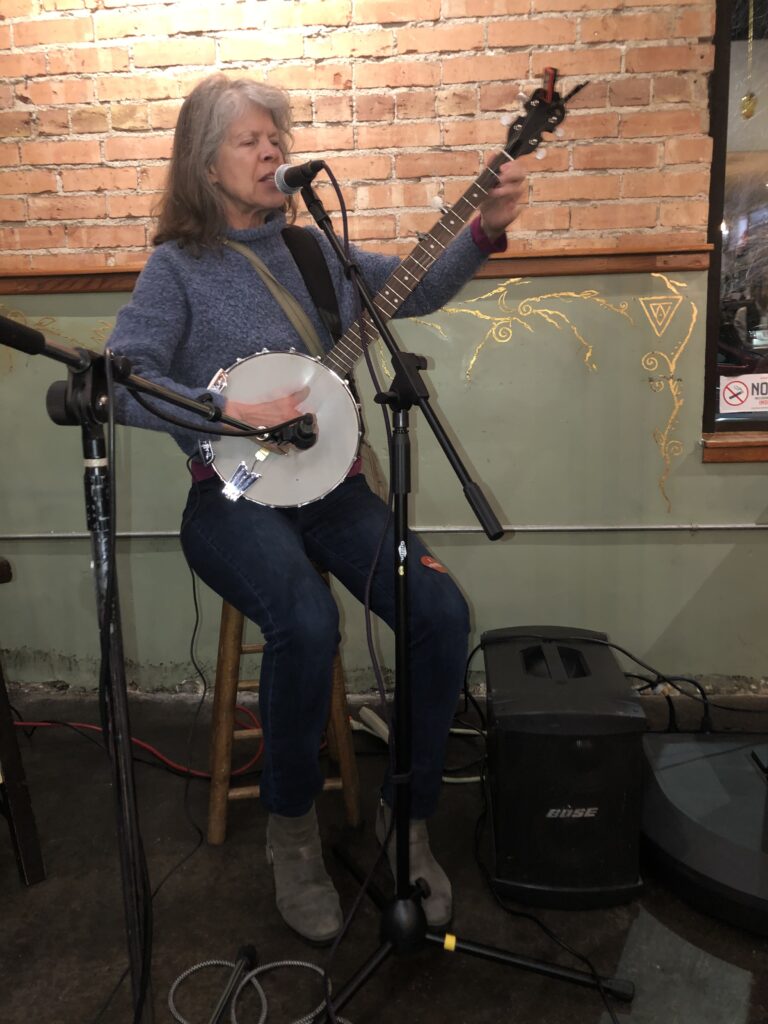There are a few categories of Open Mic performances that we will address in this post. As previously mentioned in the Open Mic article, preparation is key to having the best overall experience at your performance.
Our Focus For This Post
- Acoustic Instruments: Guitar, Ukelele, Banjo
- Electric Instruments: Guitar, Bass
- Other Stringed Instruments (Cello, Violin)
- Keyboard
- Prerecorded Sounds or Music
- Percussion
- Spoken Word / Comedy
Guitar / Ukulele / Banjo Players
Let’s start with the most common open mic instruments. There are a lot of guitars, ukuleles and sometimes banjo players at open mics. Chances are (statistically speaking) your performance is with a guitar. If not, read on as we will take on each category in the list above.
For this section, we will include the ukulele and banjo as the following information generally applies to both instruments. Note: Banjos are loud and can be completely acoustic in small venues. Many of the banjo players I have worked with have pickups installed, but also work great with an external microphone.
Guitar and Banjo Players
You have a list to keep up to date. And NOT keeping that list up to date is causing or WILL cause others to wait due to your lack of preparedness – this is disrespectful, and sloppy tradecraft.
What I have noticed over the years is that most open mic performers do not take this list seriously and rely on everyone else to lend them what they need.
Unexpected Issues
Unexpected issues do arise from time to time that will have you borrowing a pick or capo…just don’t make it a regular thing. Make sure you check this list at least a day before, the day of, and just before you leave for your performance.
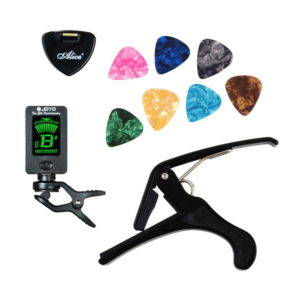
The Checklist
- Fresh pickup battery (and a couple of spares) for Active Pickups. These batteries are usually 9V. (Active Pickups are highly recommended…see more on active pickups below)
- Reasonably fresh strings (more important on guitars)
We call old strings “thumpers” as they are more percussive than tonal. If you cannot hear a nice tone out of your strings, it’s time to put on a new set. - Tuner with a good battery (buy two tuners to have an extra)
- Picks – Bring plenty of your favorite picks in some sort of container. A sandwich bag works just fine.
- Capo – At least two (if you use them)
- Strap – adjusted to your comfort level
- Optional – a small “gig” bag for extras.
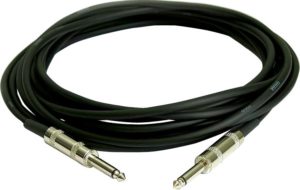
Guitars And Ukuleles Are Easy
These are easy instruments if you have a pickup system that uses a standard, quarter-inch plugin. It’s better if your pickup system is active, meaning it is powered by a battery. And even better if you have onboard guitar volume and tone controls.
These onboard systems have a better volume and frequency level with which to work. The other pickup type is what is known as “passive” and can really cause issues with usable tone and volume especially the longer the cable is to the mixing board.
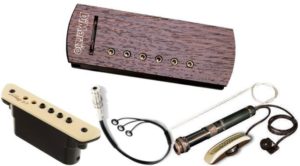
Long Cables
The longer the cable to the sound mixer, the more degradation in the signal and the worse your instrument will sound. This can be remedied with an external microphone from the sound person, but there are a host of issues related to relying on the external mic setup.
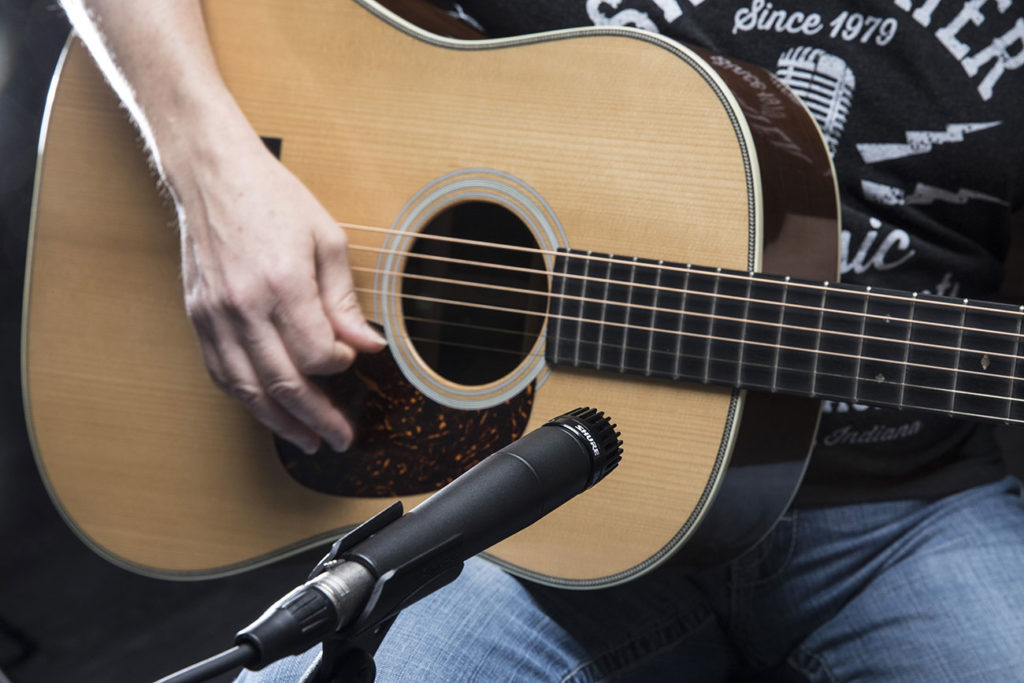
External Microphones
If you HAVE NOT had experience playing with an external mic, it is likely you will not be able to keep your guitar fixed on the sweet spot during your performance due to body movement. The anatomies of banjos and ukuleles are much easier to keep near the mic
There are even more options for acoustic guitar pickups like sound-hole, internal microphone, etc. that we will cover in more detail in another post.
Other Stringed Instruments (Violin, Cello, Bass, etc)
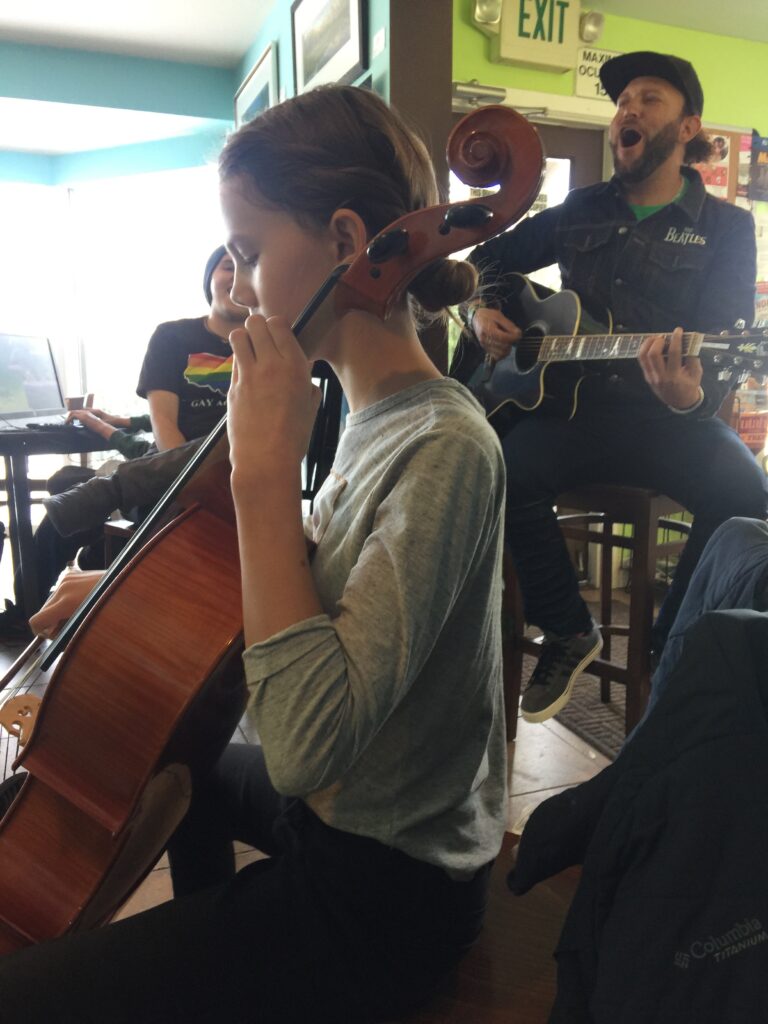
Some professionals and knowledgeable amateurs use pickup systems for there orchestral instruments, but these instruments are naturally loud and can cut through an indoor performance easily in smaller venues. However, microphones are a handy addition for soft, nuanced performances and can effectively spread the sound around the venue. Your open mic host will have options…just ask!
KEYBOARD PLAYERS

Keyboards are pretty straight-forward for sound people. The keyboards are usually compact, light and easy to carry in a bag. There are full-size keyboards, but these rarely show up at the Open Mic venues. These instruments come with a strong line-level signal with a standard quarter-inch plug and do not need a preamp. No batteries needed.
I’ve worked with many keyboard players and the only big issues I’ve experienced are those not familiar with the menu systems on their keyboards…but that is rare.
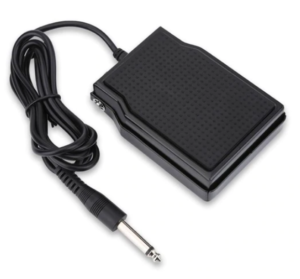
Not so rare are sustain pedals that don’t work. Fear not, it’s not the end of the performance, just a little less control on the sustain most likely not even noticed my most.
Even if you opt for a more expensive main sustain pedal, it is good to have an extra, less expensive backup. Usually costs less than $20.
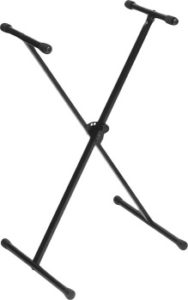
The other is the keyboard stand. Many keyboard players hope that they can just find a suitable alternative at the venue like a couple of chairs with arms placed front to front or a small cafe sized table.
Veteran performers who have made prior arrangements will sometimes put their keyboard on a table. If you’re new to this and haven’t made arrangements ahead of time, my advice is to bring a stand. They are compact and lightweight and don’t require a major disruption at the venue to move tables and chairs to accommodate you.
Pre-Recorded Music
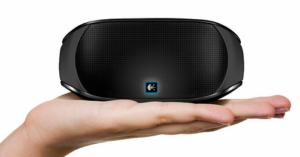
Many performers today are taking advantage of the compact, wireless boom boxes for using a pre-recorded track to back their performance. Purists don’t care for it, but I think there is a place for this performance art form ESPECIALLY if it is original work that the artists has prerecorded. It falls in a similar category of the guitar looper.
Many venues will not allow the use of copyrighted material in a public performance. Not just because of the copyright issues, but the fact that open mics are distinctly NOT Karaoke. There are so many Karaoke venues to express yourself if your desire is to use prerecorded music that is not your own.
I can tell you that most Open Mic hosts prefer to mic the boombox rather than to “patch” it into the system with an adaptor cable. Why? Setup time, extra cable management, volume control and lastly, being able to keep the boombox next to the performer.
Click on the links below for more on Open Mic performing!
